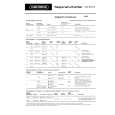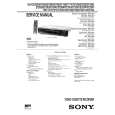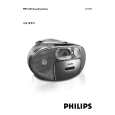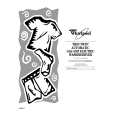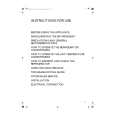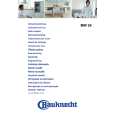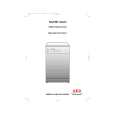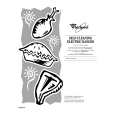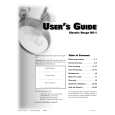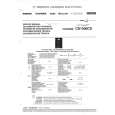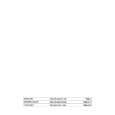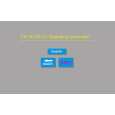|
|
|
Productos
|
|
Información
|
|
Destacado
|
|
|
 |
|
|
No hay comentarios de productos.
Philips Semiconductors
Wideband 300 W push-pull FM ampli�er using BLV25 transistors
2.2 The input network
Application Note AN98031
This network is very similar to the output network and, like it, consists of three parts: 1. The combination of L1 and L2 forms an unbalanced-to-balanced transformer whose output impedance is 50 � (balanced) 2. The combination L3 and L4 forms a 4:1 impedance transformer whose output impedance is 12.5 � (balanced) 3. The components L5 to L8 and C3 to C7 form a two-section matching network to match the input impedances of the transistors to 12.5 � (balanced). All the remarks made for the output network also apply to the input network, though several values are different. The calculation of the input network was made in the same way as that for the output network. However, the total length of the lines L1 to L4 became too long for practical use. After dividing the lengths of these lines by 1.6, the other components were re-optimized, raising the input VSWR from 1.20 to 1.27. All component values are given in Table 5. A consequence of this way of designing is that the power gain at 87.5 MHz is approximately 1.4 dB higher than that at 108 MHz. This variation must be compensated in one of the driver stages. An alternative design with a nearly flat power gain of about 10 dB can be made, however, the input matching is only good at the high end of the frequency band; at 87.5 MHz, the input VSWR rises to about 3.2. Further details of this alternative are not given here. 2.3 Bias components
Theoretically, point VB can be grounded directly. However, it may be better to ground it via an RF choke shunted by a 12 � resistor as shown in Fig.4 because of: � Small asymmetries in the transistors and circuit, and � Possible parasitic oscillation when the transistors operate in parallel rather than push-pull. Resistors R1 and R2 have been added to improve stability during mismatch. For point VC, the same holds as for point VB, except that the supply voltage must be connected to the former. In the simplest configuration, point VC is decoupled for RF frequencies. A better proposition is probably the circuit shown in Fig.5. 3 3.1 PRACTICAL 300 W PUSH-PULL AMPLIFIER WITH 2 � BLV25 General remarks
Having established a theoretical design, let us now look at a practical implementation. The amplifier has been designed on a double copper-clad epoxy fibre glass (εr = 4.5) board, thickness 1�16-inch. Figure 6 shows the print board and Fig.7 the layout of the amplifier. Rivets and, at the board edges, soldered copper straps have been used to provide good contact between both sides of the board. Where the emitters are grounded, contact is made with the lower side of the board. The print board and transistors are attached to a 10 mm thick copper plate which acts as a heat-spreader. This plate is screwed to a standard heatsink with forced air cooling. At an ambient temperature of 25 °C, and with the amplifier operating at 300 W output power, the heatsink temperature is below 55 °C. 3.2 Alignment
The first alignment was done with small signals, starting with the output circuit. The BLV25 transistors were replaced by dummy loads, representing the complex conjugate of the optimum load impedance. The dummy consists of a 2.22 � resistance and a 300 pF capacitance. To reduce parasitic inductance and to maintain the best possible symmetry, we used several components in parallel. These components were soldered to an empty SOT119 header.
1998 Mar 23
5
|
|
 |
> |
|
